There are several trading platforms in the forex industry. Platforms by MetaQuotes are the most popular among traders worldwide. These platforms include the Meta Trader 4 and the Meta Trader 5. Today we’ll be diving into all you need to know about the MT5 platform:
What is the MT5 Platform
Following in the footsteps of the immensely successful Meta Trader 4 platform, MetaQuotes has released the next-generation trading platform known as MetaTrader 5. Despite the fact that MT4 was designed specifically for forex trading, MT5 is functionally designed to accept other asset classes, one of which is cryptocurrency trading.
MT5 is the ideal multi-asset platform for the modern trader who is looking to enhance their trading experience by using a selection of powerful and effective new features in addition to highly practical trading tools and resources. MT5 is the ideal multi-asset platform for the modern trader who is looking to enhance their trading experience.
MetaTrader 5 is loaded with a variety of trading tools and resources, all of which are created with the intention of making your trading operations more successful. It is essential to have an understanding of all of the features and the contexts in which they may be used in order to guarantee that you are adequately prepared to benefit from the full capability of the platform.
You will be able to fully utilize the strength and power of the MT5 platform if you take a little time to teach yourself all of the available features of this interactive platform. These include the available seven asset class types, numerous trading tools, indicators, and graphical objects, as well as the six different order types, multiple automated strategies, and market depth.
Opening A New Position
Opening a new position on the MT5 platform does not differ much from opening it on the MT4 platform. Aside from a couple of new features, the execution and everything still remain the same. Here is how to open a new position on the MT5 and the features that come along with it.
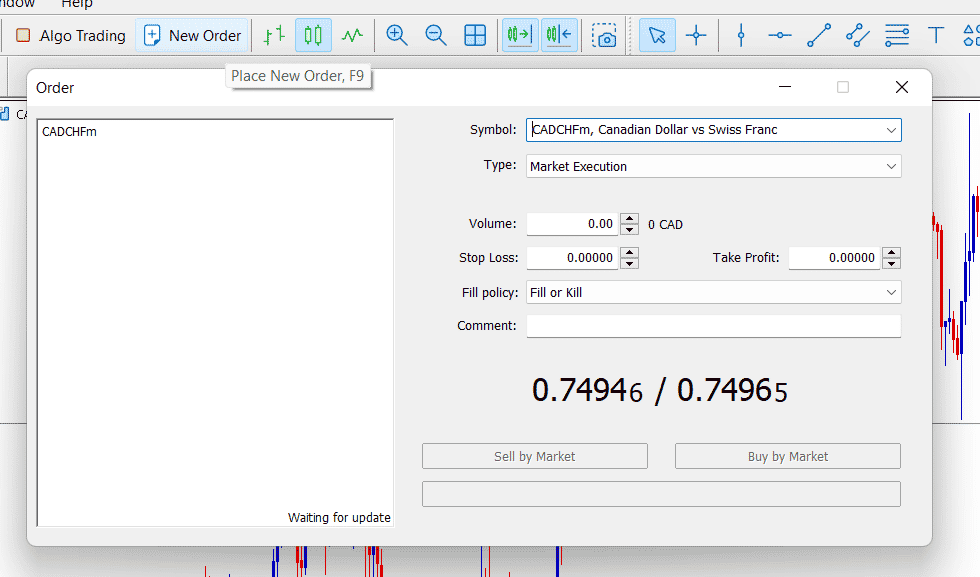
How to Open a New Position
On the MT5, opening a new slot is a rather straightforward process. To place a new order, all you need to do is look at the top of your menu, where you will see a sign that says “new order.” When you click on that indicator, it will bring up a new window that gives you the option to either place a buy position or a sell position, depending on which one you prefer. In order to further tailor this position to your preferences, there are a number of things that you can do, which we will discuss in more detail below.
Pending Orders
You can instruct your broker to purchase or sell a certain position at a specific price in the future by placing what is known as a pending order. You will do this in the event that the market has not yet hit that price, but you do not have enough time to stay on the market and wait for it to be touched. As a result, you may open a pending order, which is either a buy limit or a sell limit, so that the market will automatically execute the order at the price that you established after it has been touched. This will save you time. This feature is available on the MT4 as well.
Stop Loss
You have the option of placing a stop loss order on any transaction that you have already executed if you do not have sufficient time to constantly monitor the market. Now, what this accomplishes is that it stops you from suffering a loss that is more than what you are able to comfortably endure. The way that this occurs is that you establish a fixed price on a position that has already been completed, and if the price hits that price that you set, the transaction will close by itself at a loss. If the price does not reach the price that you set, the deal will remain open. Because of this, the trade will not cause you to suffer greater losses than you are able to manage. This feature is available on both the MT4 and MT5 platforms.
Fill or Kill
Due to the nature of this execution policy, an order may only be carried out within the limits of the volume that it specifies. If the market does not currently have the required quantity of a financial instrument, the order will not be carried out since it cannot be fulfilled. The needed volume is currently capable of being satisfied by many offerings that are now accessible on the market. This is a great feature that isn’t available on the popular MT4 but is still very useful and highly used on the MT5.
Top MT5 Technical Analysis Tools
The Meta Trader 5 platform has significantly more trading tools than the Meta Trader 4 platform. This is why it is the preferred platform for experienced traders globally. Here are the top technical analysis tools on the MT5:
Adaptive Moving Average
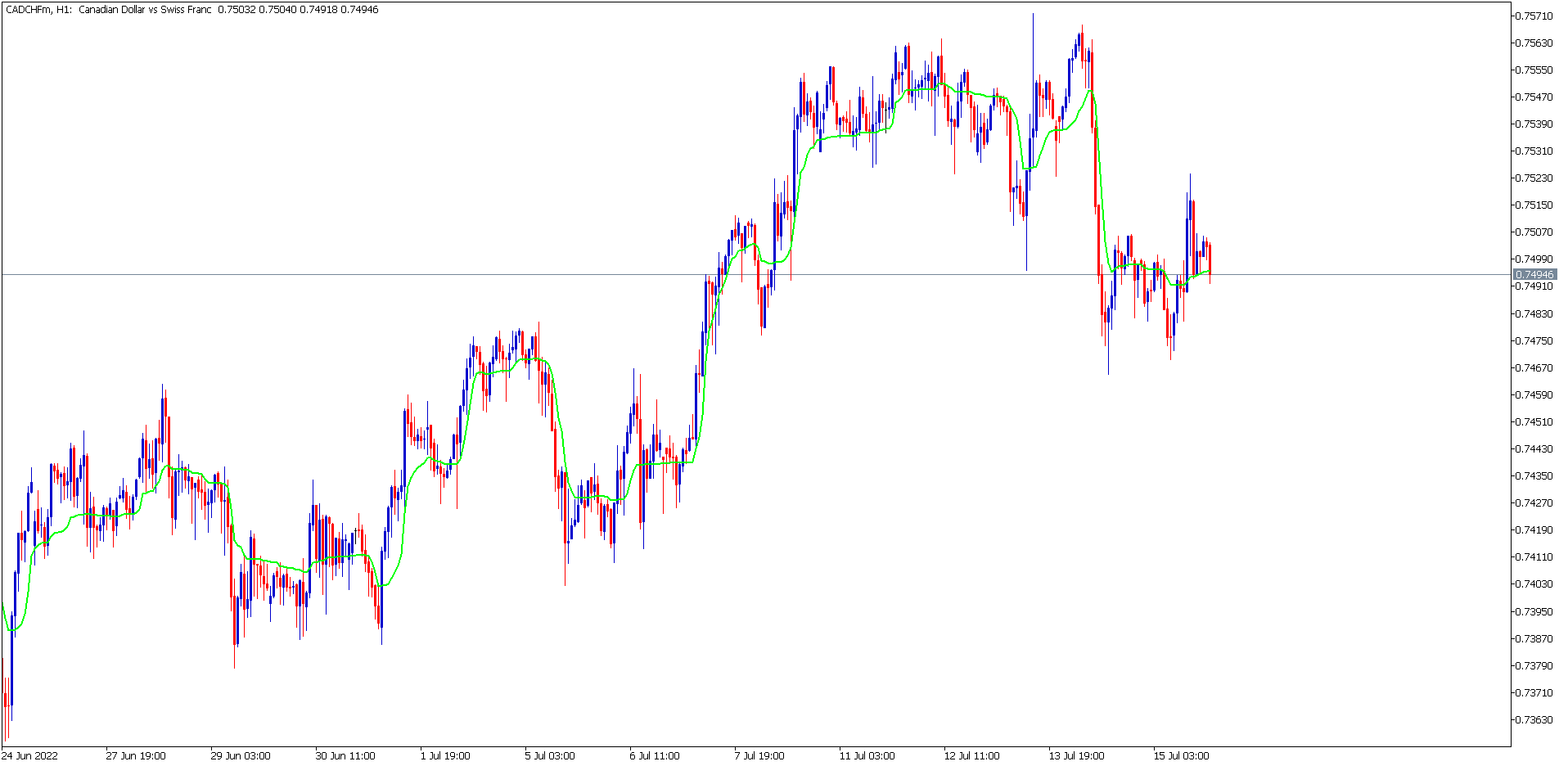
An example of a moving average is the Adaptive Moving Average (AMA), which adapts its sensitivity to changes in price based on the predicted volatility of the market. It is more sensitive at times when the price is steadily heading in a particular direction, and it is less sensitive during times when the price is volatile. To do this, one must first calculate the Efficiency Ratio. This provides a measurement of the relative strength of the trend.
There are two distinct approaches to computing the Adaptive Moving Average, each of which is distinct from how the ER is computed. The expected return, or ER, in KAMA is determined by taking the ratio of the directional value to the volatility. When calculating AMA, the ER takes into account where the closing price falls in relation to the high-low range. In either manner, the ER calculation will use a default period of 10 bars for the period being measured.
The indicator chooses a smoothing coefficient for the exponential moving average to be applied to the price data based on the value of the ER. This allows the data to be more easily interpreted. The largest value of the ER that is feasible corresponds to the smoothing coefficient of a 30-period EMA, while the least value of the ER that is possible corresponds to that of a 2-period EMA.
This is the default setting for the ER. ER values that fall in the middle are those that correspond to smoothing constants that are obtained from an equation using quadratic functions that were developed by Perry Kaufman.
Envelopes
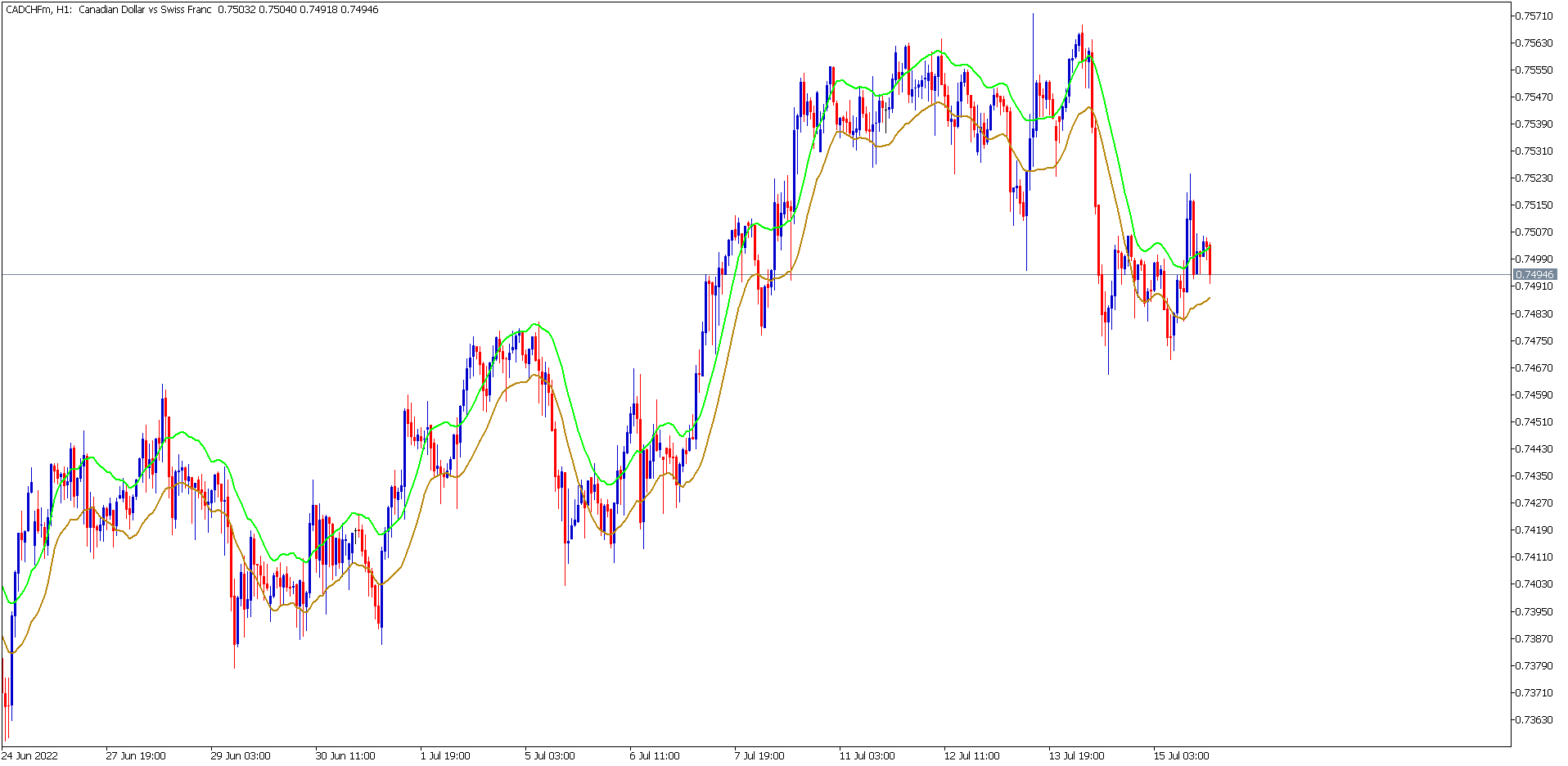
Typically, envelopes are plotted over a price chart with upper and lower boundaries. Envelopes are considered to be a type of technical indicator. The moving average envelope is the most popular type of envelope, and it is constructed using two moving averages that define upper and lower price range levels.
The moving average envelope is the most frequent type of envelope. Envelopes are a tool that traders and investors frequently turn to for assistance in determining severe overbought and oversold positions, in addition to trading ranges.
Envelopes can be interpreted in a variety of ways by traders; nonetheless, the majority of traders use them to create trading ranges. When the price of the asset crosses the upper bound, it is regarded as being overbought, and a sell signal is produced. On the other hand, if the price drops below the lower bound, then the security is regarded as having been oversold, and a buy signal will be created.
These tactics are founded on the concept of reverting back to the mean. The upper and lower boundaries are often established in such a way that the price has a tendency to remain within the upper and lower thresholds when conditions are considered to be normal.
In order to prevent trading signals from whipsawing, investors may choose to employ bigger percentages when establishing the envelope for volatile assets. In the meantime, less volatile assets could call for a smaller proportion in order to provide an adequate number of trading alerts.
Standard Deviation
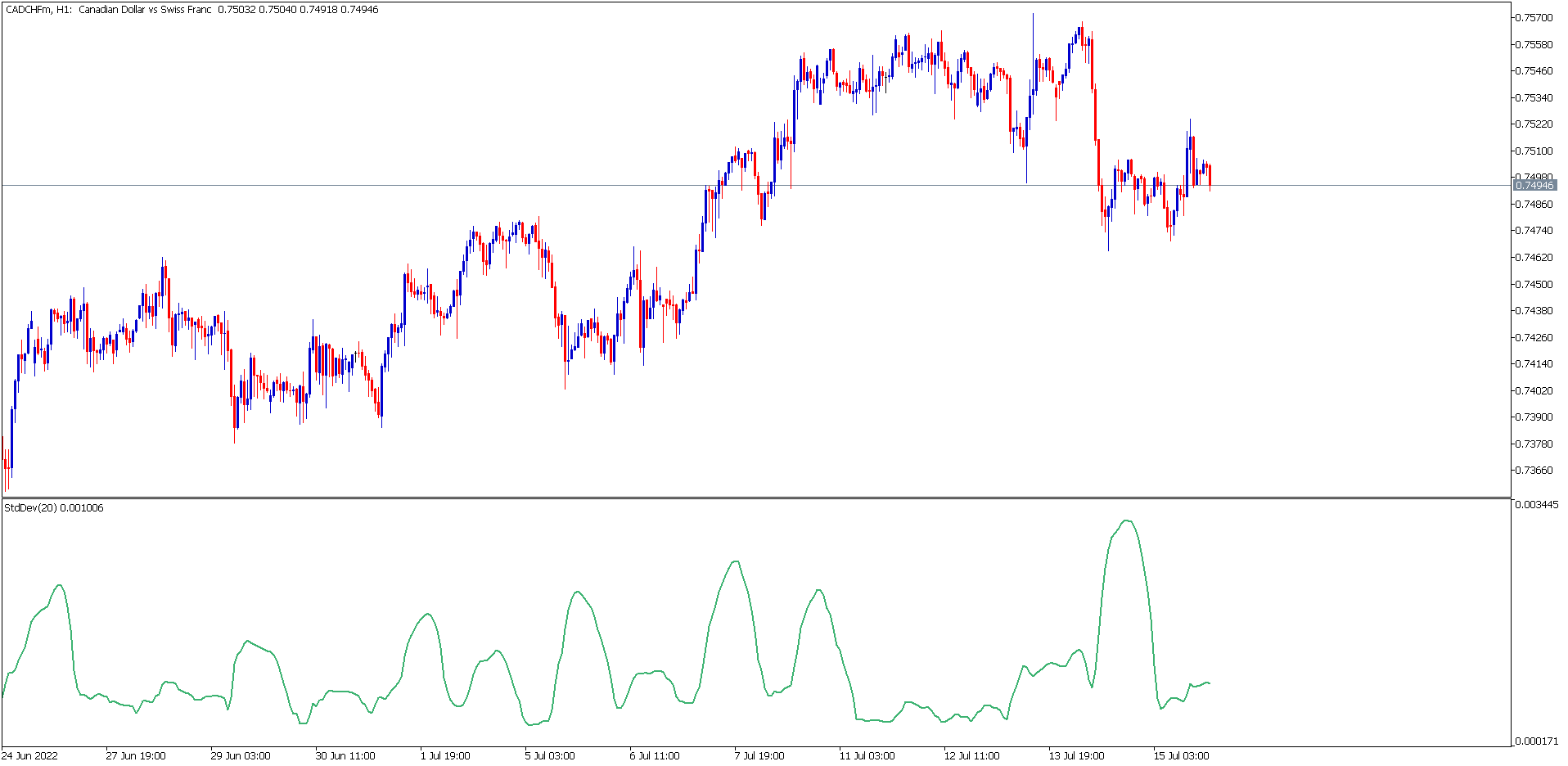
The standard deviation is a type of volatility indicator that is used in online trading systems. It is used to show and evaluate periods of volatility, as well as to adjust the settings of other technical indicators. This allows the system to react more quickly to the signals it receives during high periods of high volatility. This includes instances in which price trends change very fast and investors are required to open or terminate a deal in a prompt manner.
The standard deviation indicator is used in statistics to indicate the variability or dispersion of a set of data around the average value of the data set. It is also used to quantify the market’s volatility. In the field of technical analysis, this term refers to the fluctuation of prices in relation to a moving average. The market is considered to be more unstable or volatile while the standard deviation is larger.
On the other hand, a market is considered to be more consistent and reliable once its standard deviation is lower. To put it another way, the price bars are converging rapidly toward the moving average. On the other hand, it is a well-known truth that the dynamics of the market are defined by an oscillation of periods of stability followed by peaks in activity.
Chaikin Oscillator
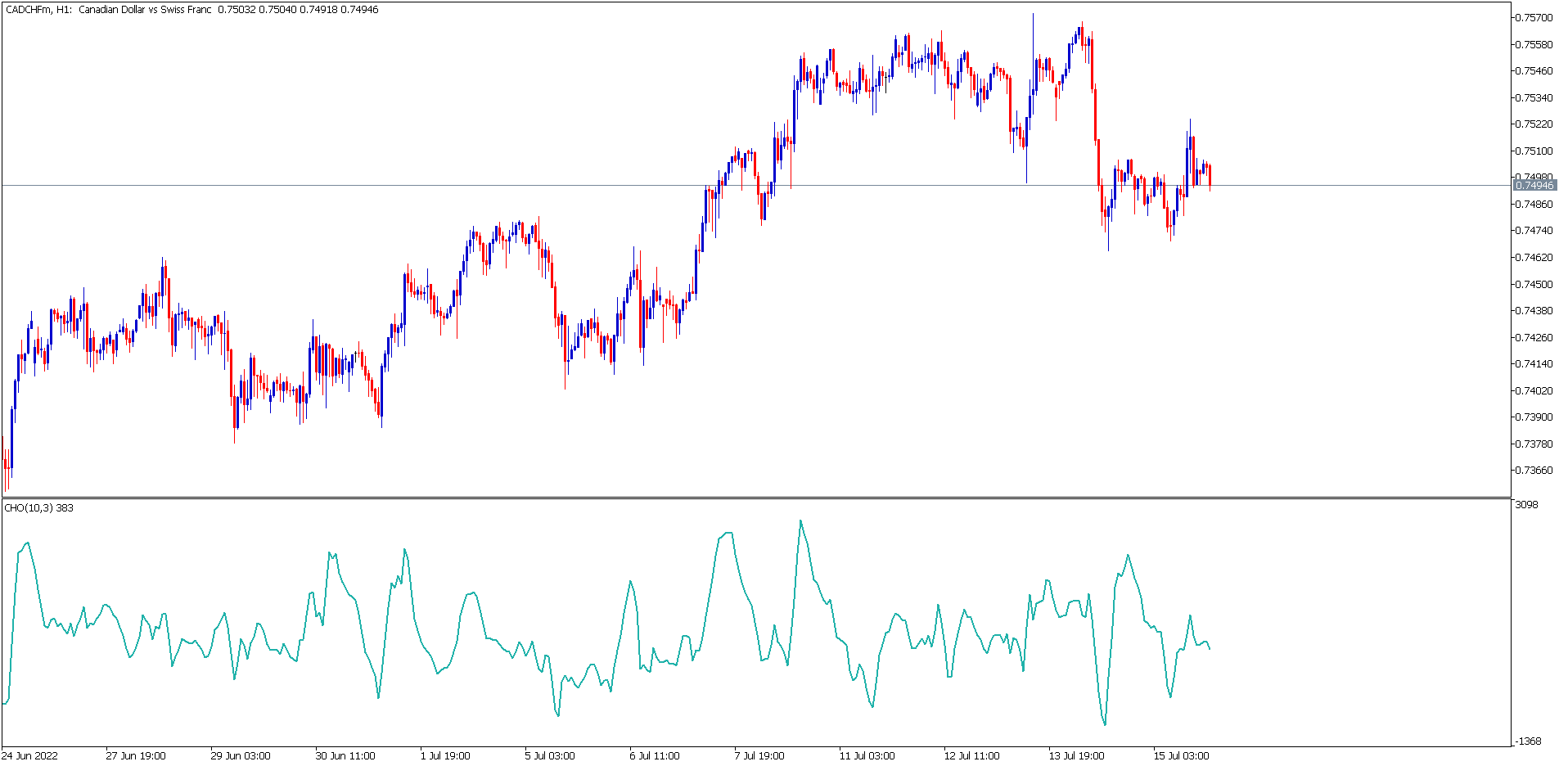
The oscillator known as the Chaikin is named after its inventor, Marc Chaikin. The accumulation-distribution line of moving average convergence-divergence (MACD) is what the oscillator is measuring.
To get the Chaikin oscillator, take the difference between the 10-day exponential moving average (EMA) of the accumulation-distribution line and the 3-day EMA of the accumulation-distribution line. This will give you the Chaikin oscillator.
This determines the momentum that may be anticipated based on oscillations that occur around the accumulation-distribution line. Finding directional trends in momentum is the job of the Chaikin oscillator, which is used by technical analysts.
When the Chaikin oscillator moves above a baseline, this creates a positive divergence in the indicator. The line that represents the baseline is referred to as the accumulation-distribution line. When that line is broken above, it implies that buyers are entering the market, which is a normally bullish sign.
There are two basic buy and sell signals that are used by the Chaikin oscillator. First, a possible purchasing opportunity is indicated when a center-line crossing occurs above the accumulation-distribution line. This confirms the presence of a bullish divergence in the market. Second, the presence of a negative divergence is validated when the center line crosses below the accumulation-distribution line, which indicates the existence of a possible buying opportunity.
MACD
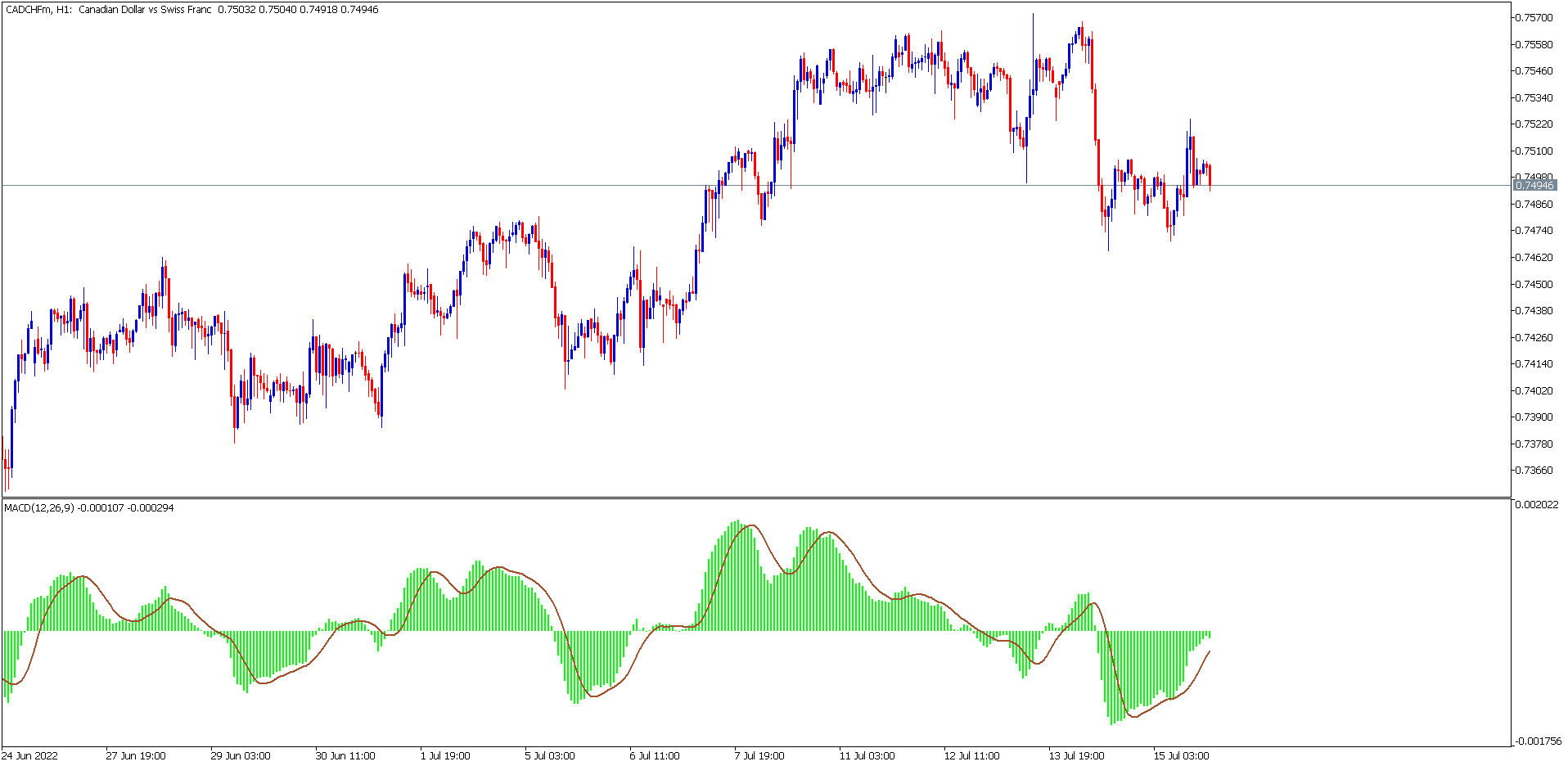
The moving average convergence divergence (MACD) is a momentum indicator that follows trends and displays the connection between two moving averages of a security’s price. The MACD is computed by taking the difference between the exponential moving average (EMA) of the last 26 periods and the last 12 periods.
The MACD line is the outcome of the computation that was just done. After that, an exponential moving average of the MACD for nine days, also known as the signal line, is placed on top of the MACD line. This line acts as a trigger for buy and sell signals. When the MACD crosses above its signal line, investors may choose to purchase the asset.
When the MACD crosses below its signal line, investors may choose to sell the investment. Moving average convergence divergence (MACD) indicators may be interpreted in a number of different ways; however, the most popular techniques are to look for crosses, divergences, and fast increases and falls in the indicator.
The MACD indicator is frequently presented alongside a histogram that displays the distance that separates it from the signal line. When the MACD is above the signal line, the baseline of the histogram will be elevated above that of the MACD. In the event that the MACD is below its signal line, the histogram will be located below the baseline of the MACD. Traders examine the histogram of the MACD to determine if bullish or bearish momentum is at a high point.
Stochastic Oscillator
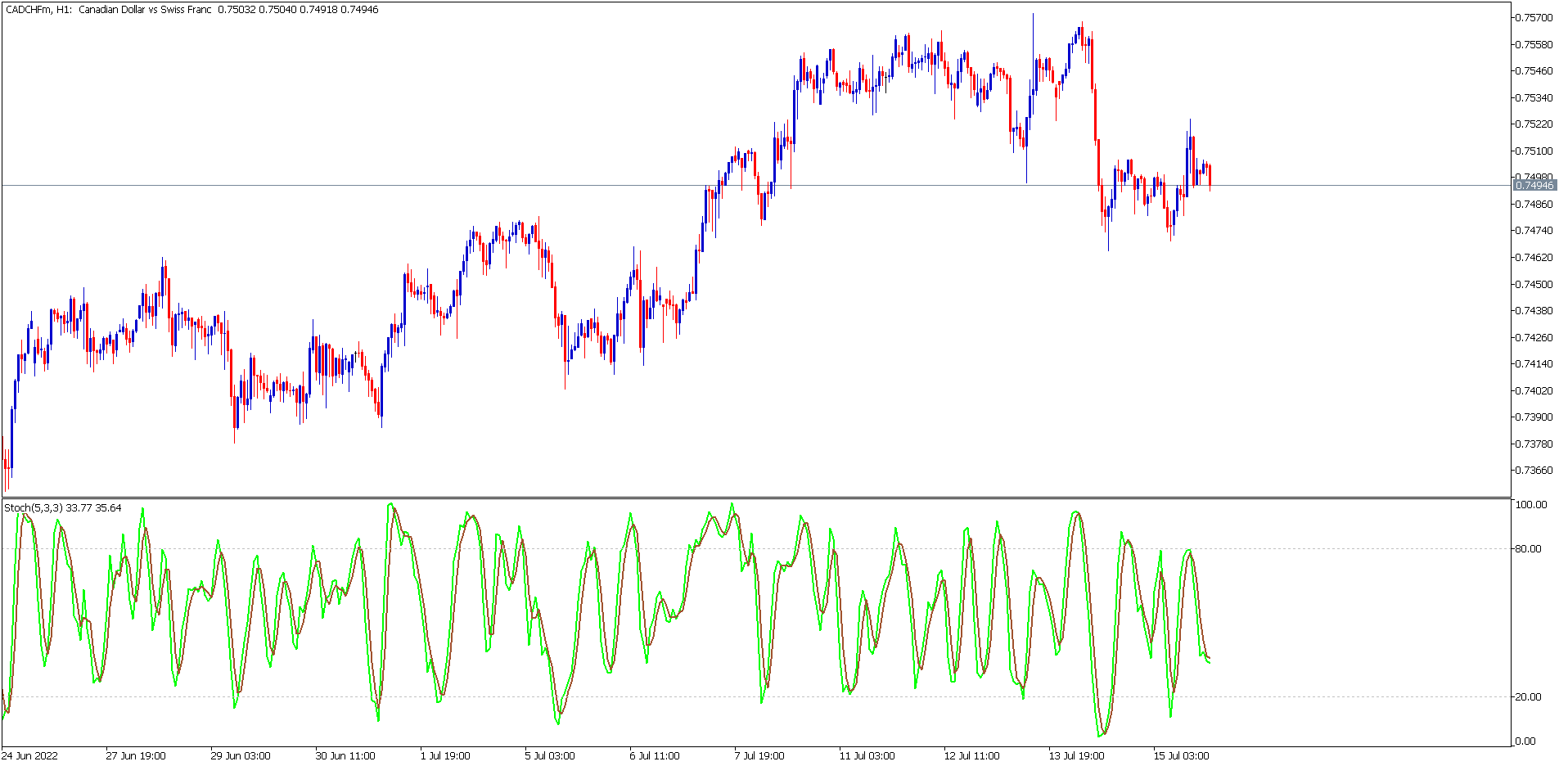
An indicator known as the stochastic oscillator does a price comparison between the most recent closing price of a security and the highest and lowest prices that have occurred over a particular time period. For the purpose of providing an indicator of the security’s momentum, it provides values that range from zero to one hundred.
The stochastic readings are, in essence, percentage representations of the trading range that a security has experienced over a certain amount of time. A reading of 0 indicates the point in the trading range that is the lowest possible value. When referring to a certain time period, a value of 100 represents the highest point reached within that time period.
The oscillator does a comparison between the location of a security’s closing price in relation to the maximum and minimum points of its price range during a period of time that the user specifies. In addition to determining the magnitude of price movement, the oscillator may also be utilized to forecast the turning points at which a market reversal will take place.
On Balance Volume
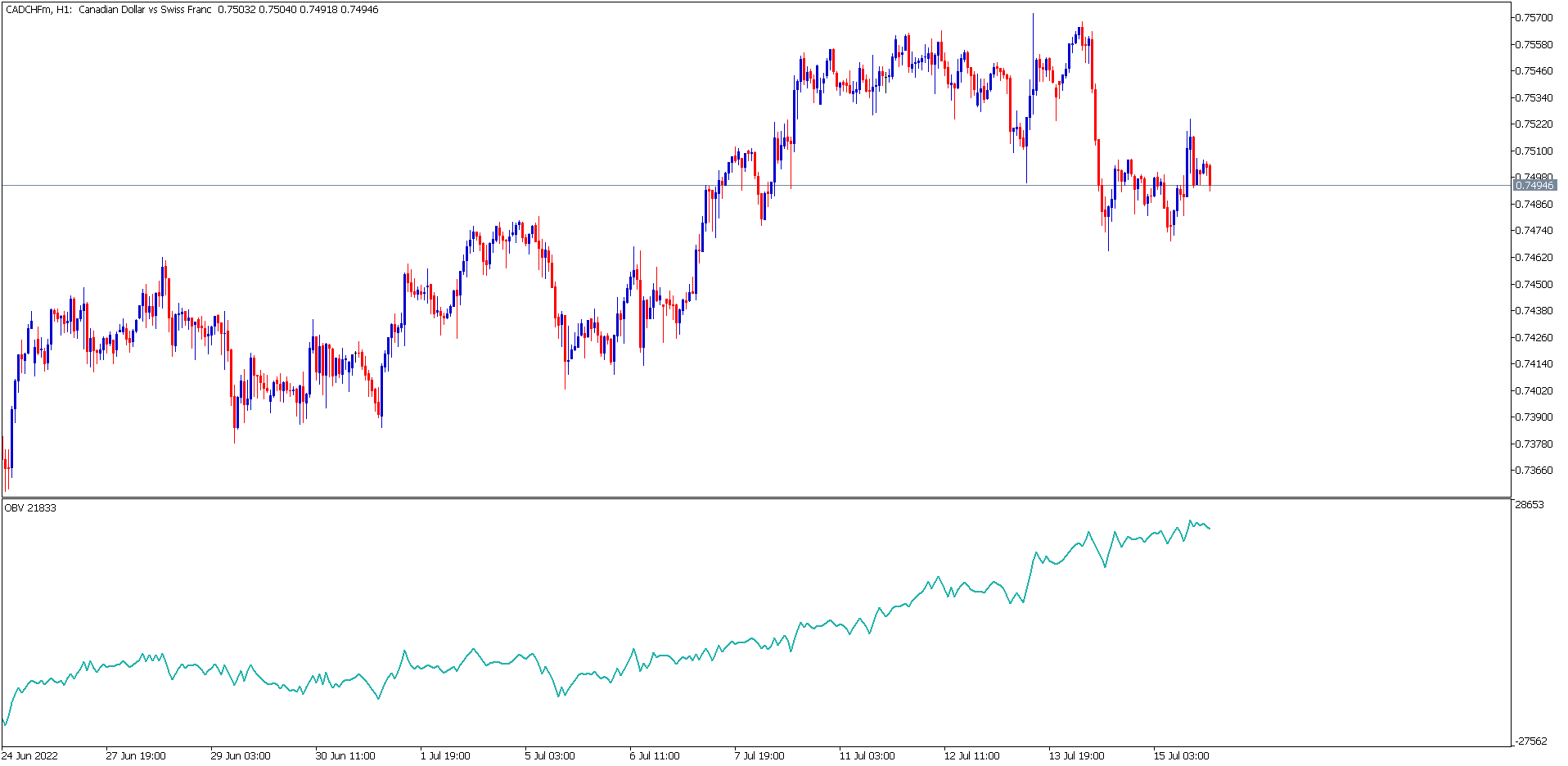
On Balance Volume (OBV) is a cumulative indicator that monitors purchasing and selling pressure. It does this by adding volume on days where it is up and subtracting volume on days where it is down.
When a security finishes the day at a higher level than its previous closing price, the entirety of that day’s volume is referred to as up-volume. When a security closes at a price that is lower than its previous closing price, the entirety of that day’s volume is referred to as down-volume. The actual individual quantitative value of OBV is irrelevant, despite the fact that it is displayed on a price chart and assessed numerically in some way.
Because the indicator itself is cumulative and the time interval is determined by a beginning point that is devoted to it, the actual numerical value of OBV is arbitrary and depends on the date that the indicator was first used. Instead, traders and analysts focus on the characteristics of OBV changes over time; the slope of the OBV line bears the entirety of the weight of analysis.
Top Features of the MT5 Platform
The Meta Trader 5 platform is the upgraded version of the Meta Trader 4 platform. Now what this means is that it has several more features than the MT4. Here are the top features of the MT5 platform:
Real Volume Data
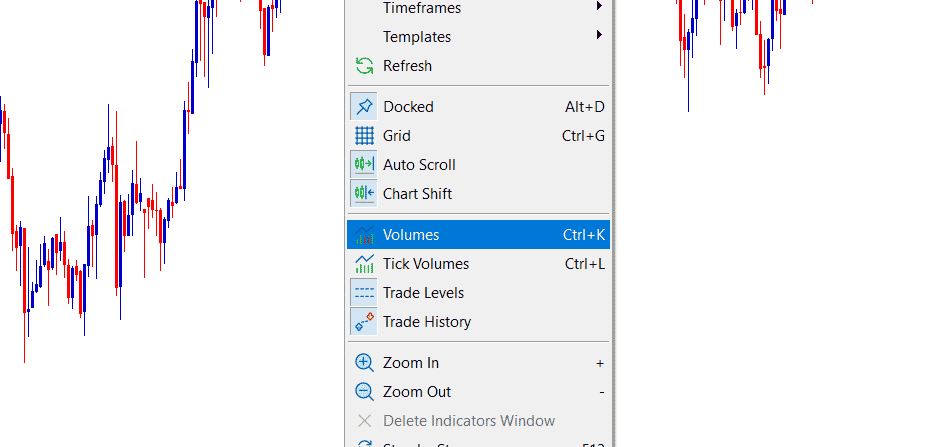
Traders using the MT4 platform are unable to view the actual trading volumes, which are measured in terms of contracts or lots. They are only permitted to evaluate the tick volume data. The number of times the price moved on a specific candlestick bar is referred to as the tick volume.
Not only do traders get access to tick volume data, but also real volume-traded data through the MT5 platform. This option will become available when you hit the right mouse button while on the chart. In technical analysis, it is essential to conduct a study of the true volume of an asset at any particular point in time.
Algorithm Trading
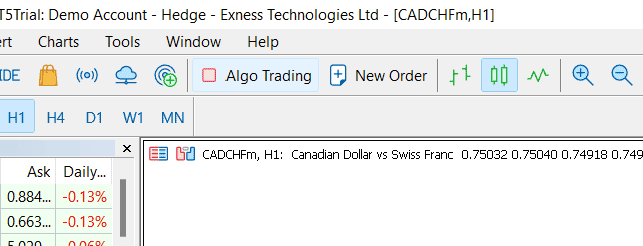
Algorithmic Trading function is undoubtedly one of the most outstanding aspects of your MetaTrader 5 platform. This characteristic denotes automated trading through the utilization of specialized software programs known as trading robots.
The trader is not required to actively participate in the operation of the robots, and they are able to assess quotation data and carry out trading actions in accordance with an underlying algorithm. Trading strategies should be automated so that traders may spend less time performing mundane tasks such as market analysis and trading.
The MetaTrader 5 platform gives you access to a full development environment, which will assist you in the process of developing and perfecting your own trading robots. You are able to develop Expert Advisors that utilize intensive computations with the help of the high-performance programming language MQL5. These Advisors provide the most precise technical analysis and forecasts possible.
Custom Timeframes
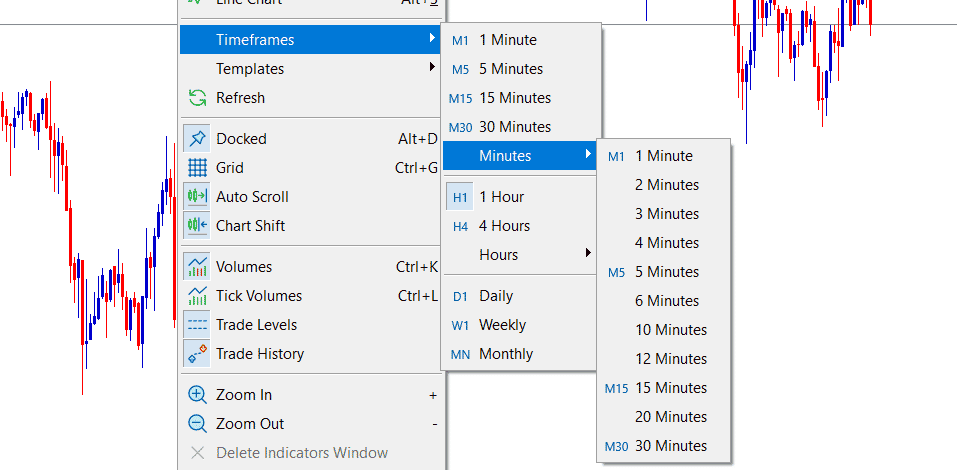
For a forex trader, the period is one of the most important components. The foreign exchange market is managed by some of the most well-known financial institutions and central banks. As a result, it is essential to have an understanding of the actions being taken by major participants in the industry.
The biggest financial institutions engage in foreign exchange trading with significantly higher volume. They put a significant amount of resources into their investigation. In addition to this, they use a longer-term in their trading technique. The daily period is used by the majority of the major participants.
However, because both a lot of money and a lot of patience are required to trade in larger periods, it can be challenging for retail traders to do so at times. The fluctuations in time provide traders the ability to view the market from a variety of perspectives. In comparison, there are 21 distinct timescales available in MetaTrader 5, whereas there were just nine available in MT4.
Virtual Private Server
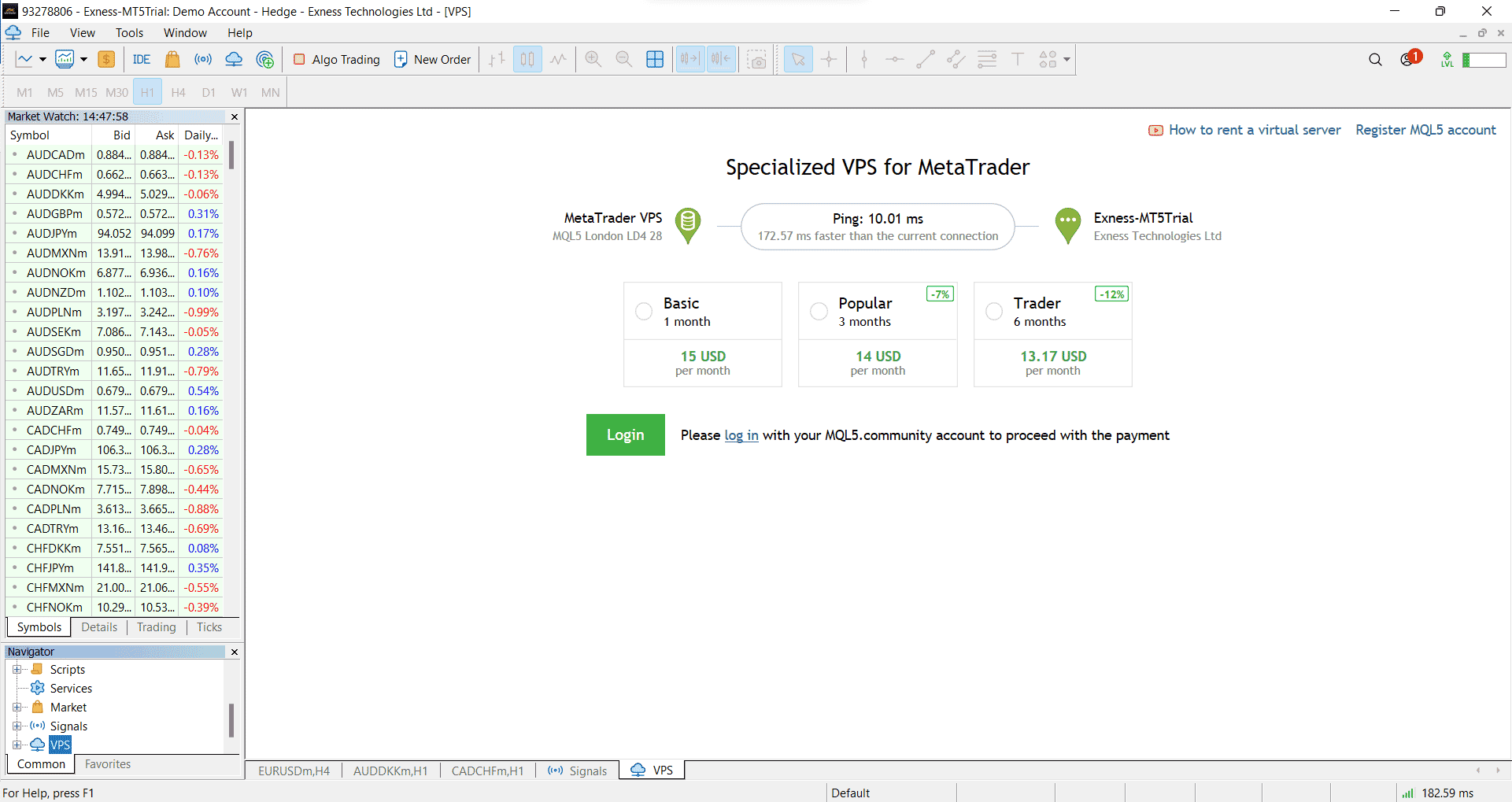
A virtual private server that is dedicated to forex trading and runs its own operating system is known as a Forex VPS. It ensures that you will have dedicated hardware resources and an IP address. The distinction is that forex traders place orders on the currency market by using a virtual server rather than a physical one.
They install the electronic trading platform of their choosing and then either manually manages their portfolios or put up robots or expert advisors to follow the automated trading techniques that they have developed. The benefit of using a VPS service is that it allows you to trade without worrying about your internet speed. You will have uninterrupted connections 24/7 which is exactly what you need as a forex trader.
Forex GDP provides you with profitable forex signals, so you don’t have to worry about risk management anymore. Our experts will analyze the chart patterns for you and provide you with only profitable trading strategies. We have economists on hand to watch the top central banks of the world to make sure that there are no major economic events. Always remember to trade without emotions. Happy trading!
